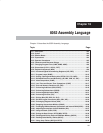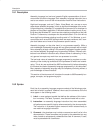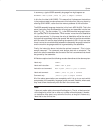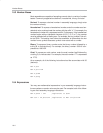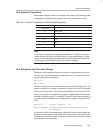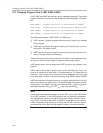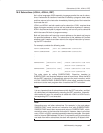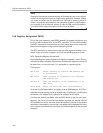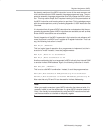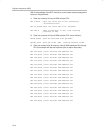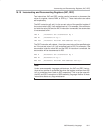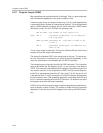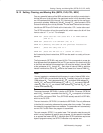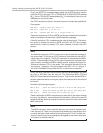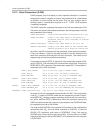
Register Assignment (MOV)
16-9
8052 Assembly Language
As already mentioned, the MOV instruction is one of the most common and
vital instructions that an 8052 assembly language programmer uses. The pro-
spective assembly language programmer must fully master the MOV instruc-
tion. This may seem simple, but it requires knowing all of the permutations of
the MOV instruction and knowing when to use them. This knowledge comes
with time and experience, and by reviewing Appendix A, 8052 Instruction Set
Overview.
It is important that all types of MOV instructions be understood so that the pro-
grammer knows what types of MOV instructions are available, as well as what
kinds of MOV instructions are not available.
Careful inspection of the MOV commands in the instruction set reference will
reveal that there is no MOV from R register to R register instruction. That is to
say, the following instruction is invalid:
MOV R2,R1 ;INVALID!!
This is a logical type of operation for a programmer to implement, but the in-
struction is invalid. Instead, it must be programmed as:
MOV A,R1 ;Move R1 to accumulator
MOV R2,A ;Move accumulator to R2
Another combination that is not supported is MOV indirectly from Internal RAM
to another Indirect RAM address. Again, the following instruction is invalid:
MOV @R0,@R1 ;INVALID!!
This is not a valid MOV combination. Instead, it could be programmed as:
MOV A,@R1 ;Move contents of IRAM pointed to by R1 to accumulator
MOV @R0,A ;Move accumulator to Internal RAM address pointed to by R0
Also note that only R0 and R1 can be used for Indirect Addressing.
Note:
When you need to execute a type of MOV instruction that does not exist, it is
generally helpful to use the accumulator. If a given MOV instruction does not
exist, it can usually be accomplished by using two MOV instructions that both
use the accumulator as a transfer or temporary register



